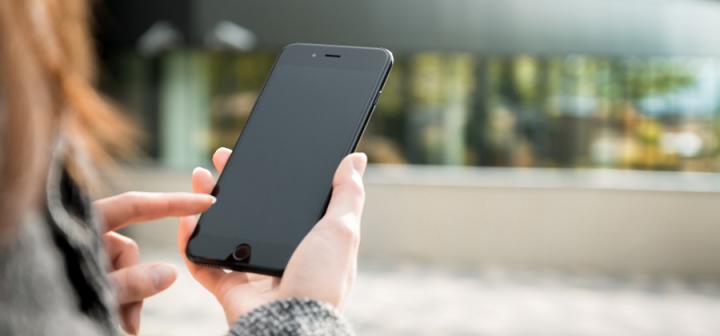Healthcare wearables
Investigating the use of smartphones and wearable sensors to facilitate longitudinal monitoring.
Background
The use of smartphones has steadily increased over the last decade, and wearable sensors have been becoming increasingly more sophisticated and affordable over the last 5-7 years. They present an enormous opportunity, if used correctly, to collect a vast quantity of data that can be used for different purposes, from understanding someone’s behavioural patterns to healthcare applications.

Research question
Can we use smartphones and wearable technology to facilitate remote longitudinal monitoring and provide new insights into healthcare applications?
Results
We have developed new algorithmic approaches to mine the underlying longitudinal data and map extracted patterns on healthcare outcomes.
For example, we have demonstrated how we can use geolocation patterns passively collected from smartphones over many months, to automatically assess depression in people who have been diagnosed with bipolar disorder (Palmius et al, IEEE TBME, 2017).
In collaboration with colleagues at Harvard, we have demonstrated that we can extract physical activity from smartphones which had been accurately matched on cardiorespiratory fitness when compared with clinical cardiorespiratory assessment in clinical settings (Eades et al, 2021).
We have demonstrated the use of wrist-worn wearable sensors collecting raw actigraphy data to objectively characterize physical activity, sleep and circadian variability characteristics to provide insights into post-traumatic stress disorder (Tsanas et al, JMU 2020) and stroke (Chun et al, Stroke 2020).
We have also extracted heart rate variability patterns to map onto mood variability and understand mood fluctuations in a bipolar disorders cohort (Carr et al, 2018).
More recently we have published an extensive review on technologies for longitudinal monitoring of well-being over and above standard smartphone apps (Woodward et al, IEEE TAC, in press), and another review on the use of smartphones and wearables to assess post-operative outcomes (Knight et al, npj DM, in press).
| Funders |
Wellcome Trust HDRUK |
| Chief Investigator | Dr Thanasis Tsanas |
| Key Collaborations | Colleagues in Oxford, Edinburgh and Harvard |
Papers
Knight SR, Ng N, Tsanas A, Pagliari C, Harrison EM. The use of mobile devices and wearable technology to measure outcomes after surgery: a systematic review. npj Digital Medicine. 2021 (in press)
Woodward K, Kanjo E, Brown D, McGinnity M, Inkster B, MacIntyre D, Tsanas A. Beyond mobile apps: a survey of technologies for mental well-being. IEEE Transactions Affective Computing. 2021 (in press)
Eades MT, Tsanas A, Juraschek SP, Kramer DB, Gervino E, Mukamal KJ. Smartphone-recorded physical activity for estimating cardiorespiratory fitness. Sci Rep. 2021 Jul 21;11(1):14851. doi: 10.1038/s41598-021-94164-x. PMID: 34290291; PMCID: PMC8295266.
Chun HY, Carson AJ, Tsanas A, Dennis MS, Mead GE, Calabria C, Whiteley WN. Telemedicine Cognitive Behavioral Therapy for Anxiety After Stroke: Proof-of-Concept Randomized Controlled Trial. Stroke. 2020 Aug;51(8):2297-2306. doi: 10.1161/STROKEAHA.120.029042. Epub 2020 Jun 24. PMID: 32576090; PMCID: PMC7382539.
Tsanas A, Woodward E, Ehlers A. Objective Characterization of Activity, Sleep, and Circadian Rhythm Patterns Using a Wrist-Worn Actigraphy Sensor: Insights Into Posttraumatic Stress Disorder. JMIR Mhealth Uhealth. 2020 Apr 20;8(4):e14306. doi: 10.2196/14306. PMID: 32310142; PMCID: PMC7199134.
Carr O, Saunders KEA, Tsanas A, Bilderbeck AC, Palmius N, Geddes JR, Foster R, Goodwin GM, De Vos M. Variability in phase and amplitude of diurnal rhythms is related to variation of mood in bipolar and borderline personality disorder. Sci Rep. 2018 Jan 26;8(1):1649. doi: 10.1038/s41598-018-19888-9. PMID: 29374207; PMCID: PMC5786095.
Palmius N, Tsanas A, Saunders KEA, Bilderbeck AC, Geddes JR, Goodwin GM, De Vos M. Detecting Bipolar Depression From Geographic Location Data. IEEE Trans Biomed Eng. 2017 Aug;64(8):1761-1771. doi: 10.1109/TBME.2016.2611862. Epub 2016 Oct 25. PMID: 28113247; PMCID: PMC5947818.


